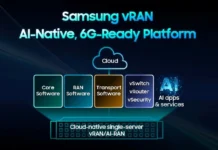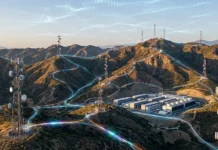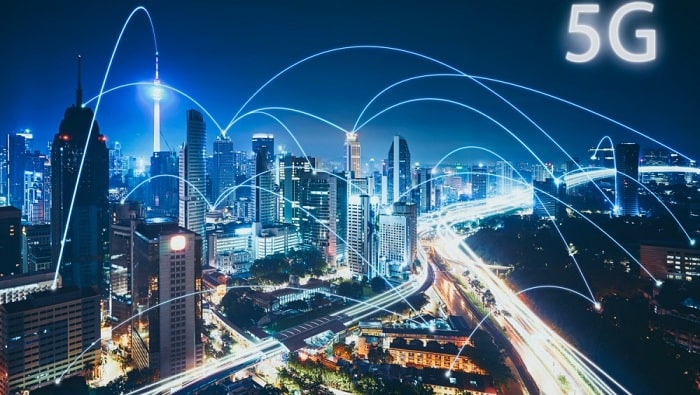5G is one of the most dynamic fields in the decade, and China is a well-deserved leader in 5G technology and industry. According to the latest statistics from the Ministry of Industry and Information Technology, 690,000 5G base stations have been built in China by the end of September and the 5G network coverage has been completed in areas such as Beijing, Shanghai and Guangzhou . The total number of terminal connections has exceeded 160 million.
In Zhang Ping ‘s view, the speed of network expansion in China and the increase in the number of users of the network is one step faster. The development of the 5G network and the implementation of the 5G industry are progressing step by step. However, China still needs a more ideal industrial interconnection solution.
Naturally, he paid more attention to finding the solution for industrial interconnection. The second World 5G Conference will take place in Guangzhou on November 26 . In an exclusive interview with Science and Technology Daily, Zhang Ping said , “When everyone is talking about 5G technology, on the one hand, they should be talking not only about the results and the experience, but also questions about station rollouts, about how we need to deal with interference between existing stations and how we can increase the speed of users On the other hand, it is more important to talk about how ICT technology and production can be better integrated so that the ‘cyber power’ can improve production capacity.
Industrial Internet cannot copy the Internet development model
On June 30, the 14th meeting of the Central Committee for the Deepening of General Reform discussed and approved the “Guidelines for Deepening the Integrated Development of Information Technology and New Generation Production”. The meeting emphasized the need to accelerate the integration of information technology and production of the new generation.
This is necessary to meet the new phase of technological revolution and industrial transformation trends and to accelerate the innovative development of the industrial Internet.
We also need to accelerate the fundamental transformation in the production mode and enterprise form in the manufacturing industry, and improve the level of the digital, networked and intelligent development of the manufacturing industry.
“5G is an enabling technology. 20% of the market is on the consumer side and 80% on the industrial side. That’s the blue ocean of 5G applications,” said Zhang Ping . And for industry users, their requirements for 5G networks are no more than two points: cheap and easy to use. However, the idea of ??building the industrial Internet by adopting the consumer Internet idea has natural drawbacks: high costs and complex technology.
More importantly, every industry and even every company has its own needs and characteristics, which leads to the big difference in the demands placed on communication. “The traditional model is to meet all needs through a single network. That can be achieved in the consumer internet. However, as far as industrial applications are concerned, it is impossible to solve all the problems in the industry with a single communication network, and that is not necessary, ”emphasizes Zhang Ping .
Therefore, he argues, the industrial internet must forgo a complex methodology and start with distributed networks to address the specific single scenario needs of companies in the sector. “To accelerate the integration of 5G technology and the unit economy, we must continuously dig deeper into the industry’s demand for information technology, combine key technologies such as edge computing and artificial intelligence, and develop wireless private networks and convergent networks through new ideas such as frequency coordination, ”said Zhang Ping . And this also requires an impressive platform that can play a pervasive and leading role and strengthen thousands of industries.
New communication iterations are driven by scenarios, not rates
Zhang Ping said mobile communications have been repeating rapidly over the past 30 years and the need to increase communication speed is the main driver behind it. This logic has also accompanied the development of every generation of mobile communications. However, 5G has a revolutionary difference. Not only does 5G represent a speed increase, but it also establishes three scenarios, namely improved mobile broadband, massive machine communication, and ultra-high reliability and low latency, ushering in a new era of communication as everything must be connected.
“The driving force for the evolution of mobile communications will be transformed from the single rate requirement of the 1G / 2G / 3G / 4G era through the three scenarios of 5G, and ultimately transformed into the base evolution model created by scenarios. is sent. ” Zhang Ping believes that the traditional engineering route of following the stack processing mode and assuming complexity in exchange for performance gains is unsustainable as it evolves towards 6G, and that new theoretical innovations are urgently needed. 6G must not only increase speed and expand space, but also the wisdom and research for a new system for the interrelationship of intelligence,communication and improve the future of humanity. “Zhang Ping said that people and network nodes in the 6G system can interact more deeply through semantics, become integrated and evolve together. Last year they started the first international cooperation project around 6G in China .
“Communication is always a great need of human society. The information flow would solve the problem of uncertainty and improve human intelligence.” Zhang Ping said the future of 5G + is an ideal. The way to implement it must be further explored and planned by the government, academia and industry.





















